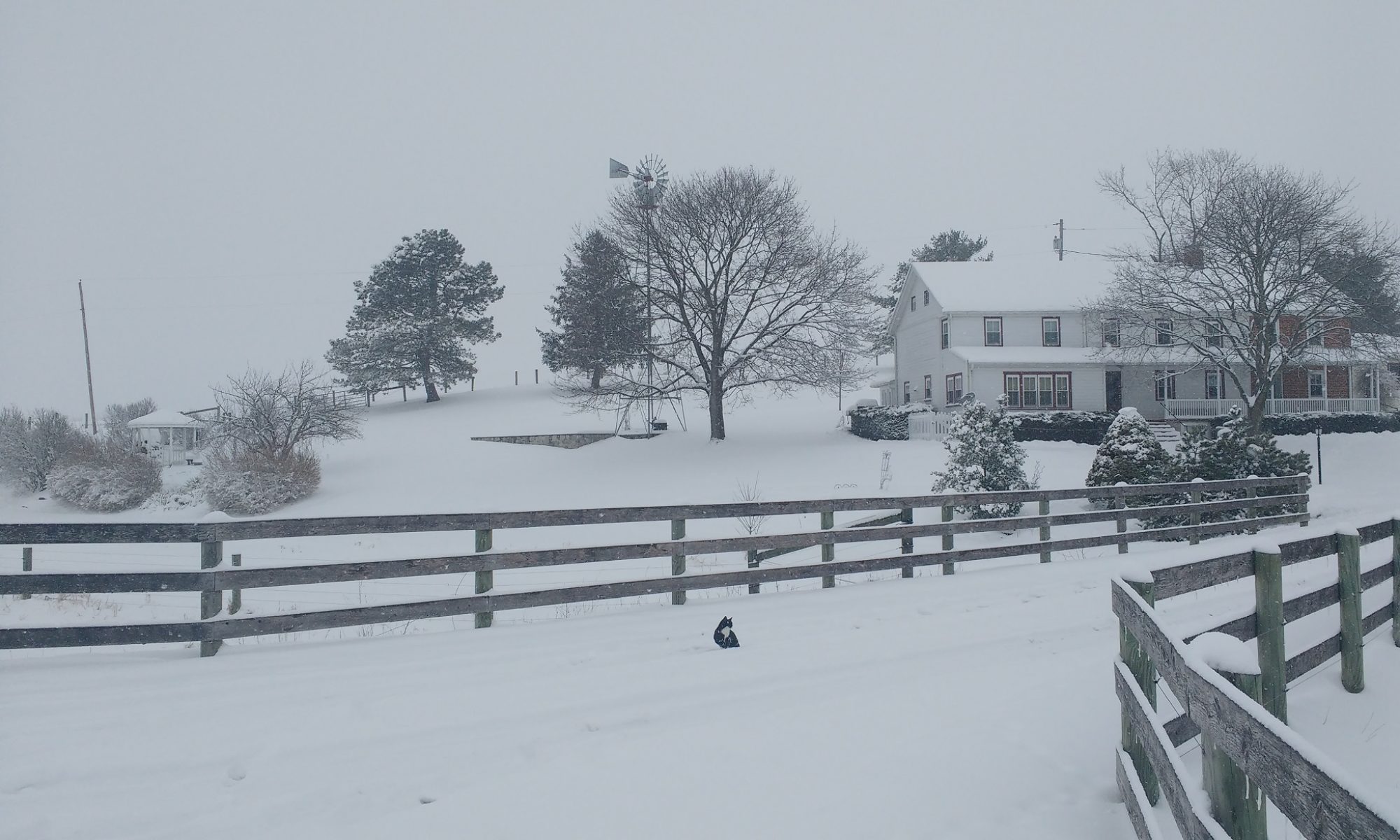This SAL-20 (Shared Apex Loop) receiving antenna is a product of Array Solutions. It targets primarily 160 and 80 meters, but is also good on 40 meters. It can be used on 20 to 10 meters will limited directivity. Four triangular loops are formed with a shared vertical support that is about 18 feet high over the active shared part in the center of the array, and it can be configured to select one of 8 directions using a controller in the radio shack. The antenna includes a preamp with about 30 dB of gain to boost the weak signal output of a small antenna and to overcome the losses in 600 feet of RG-6 to the radio shack.
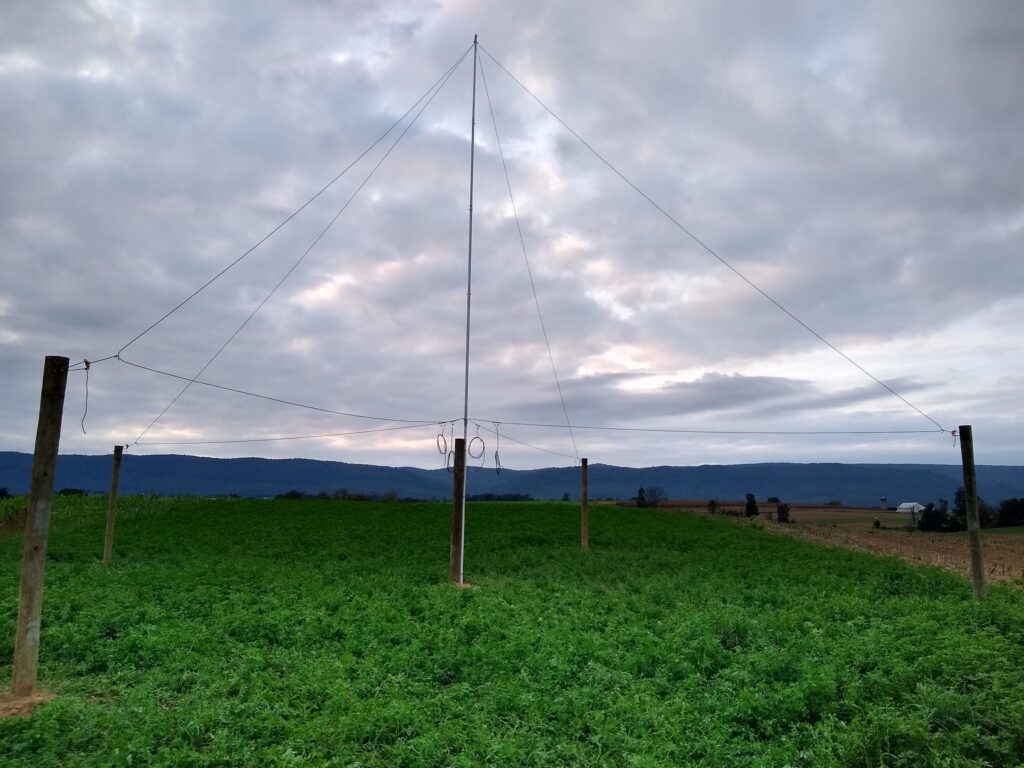
The SAL-20 is mounted on 5 wooden 8-feet fence posts. The fence posts are mounted in about 2-feet holes, and so the antenna is about 6 feet above ground level. It is installed on a ridge in a clear area of fields over 600 feet from the radio shack. This location isolates the receiving antenna from electrical noise which is most challenging on 160 and 80 meters. The closest power lines are over 600 feet away with an exception of buried power lines to a well (which are filtered as well as buried). By mounting the antenna on fence posts, it is visible and protected from farm equipment which operate directly next to the antenna, and mowing can easily be performed under the antenna.
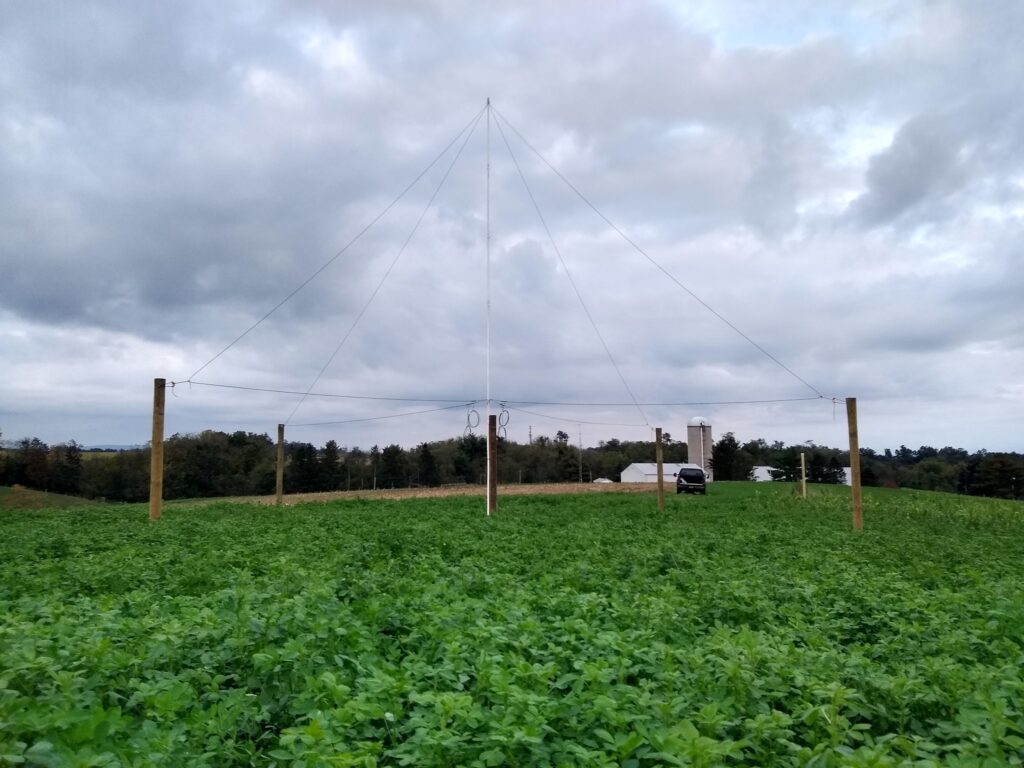
This is the view from near the SAL-20 looking towards the farm buildings. The radio shack is the small white shed to the left of the large white shed and silo.
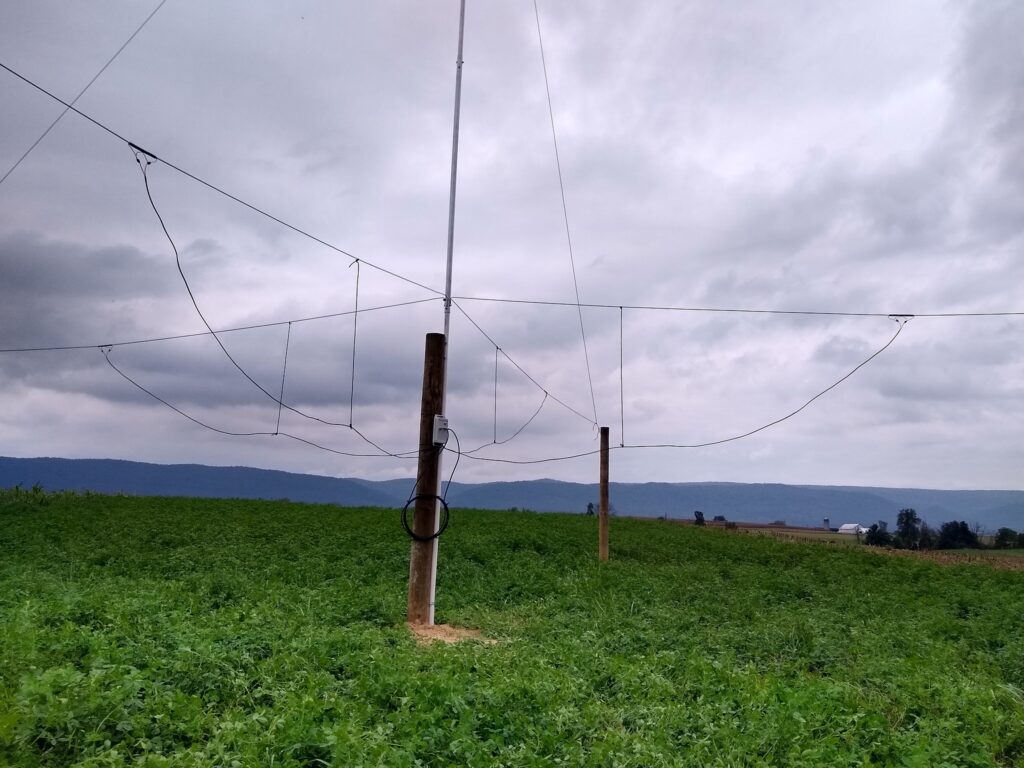
This is a close up picture of the bottom wires of the 4 loops where the receiving couplers for each loop are positioned about in the center of each bottom wire section. From each coupler, wires run to the plastic box mounted on the center post which contains the signal combining electronics and the pre-amp. Each wire connecting to the electronics box is supported by a rope in about the center of the run.
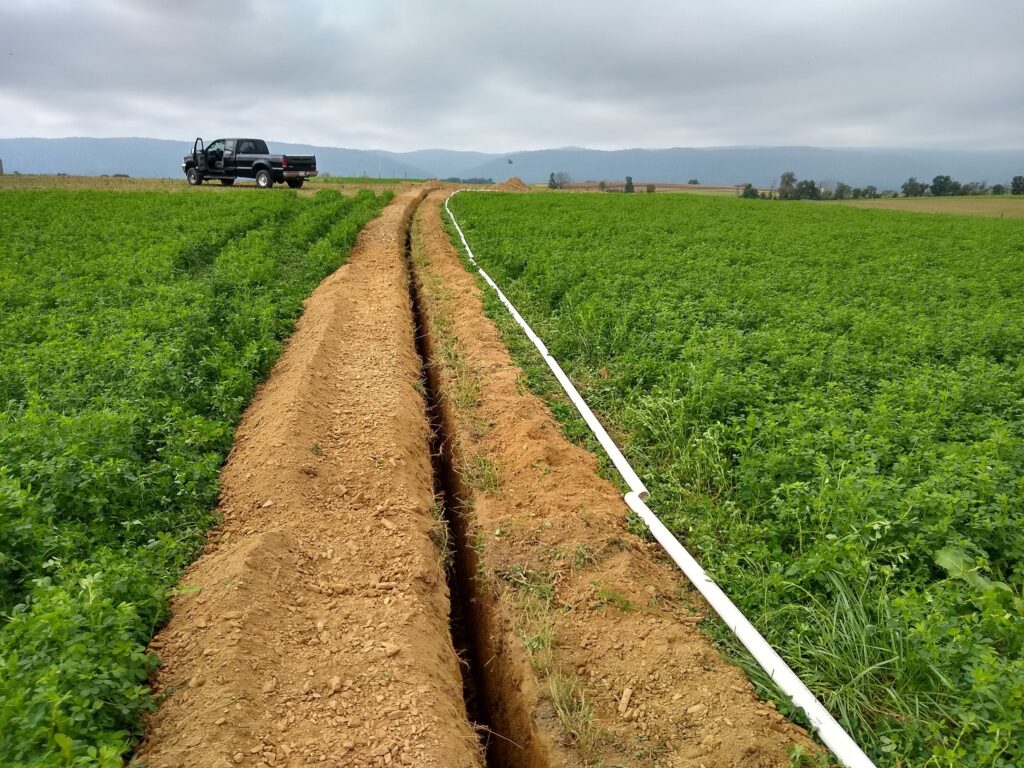
For the about 200-feet run from the edge of the field to the Hy-Tower location, 2 inch PVC pipe conduit was installed to support BuryFlex coax for the Hy-Tower and the RG-6 coax for the SAL-20. Near the Hy Tower, the RG-6 connects to continue for another 400 feet in black plastic 3/4″ water pipe to the SAL-20 location.
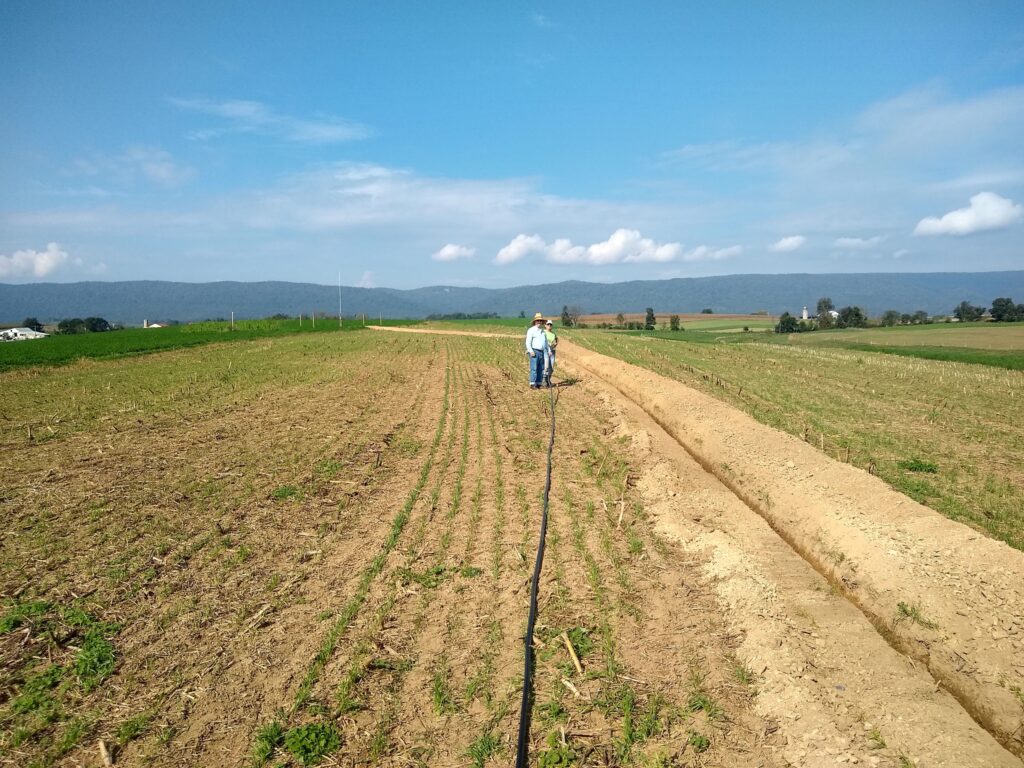
The 400 feet run from the Hy Tower to the SAL-20 was equipped with 3/4″ black plastic water pipe to protect the RG-6 coax. The coax was first laid out on the ground alongside the 2′ deep trench. Four 100-feet sections of plastic pipe were used. For each section of pipe, first a fish-tape was run through the section of pipe, and then attached to one end of the 400-feet+ coax, and then the plastic pipe was pulled along the coax and fish-tape to the reach the final position. Pipe couplers were inserted ahead of each section of pipe.
About 50 feet from the radio shack, the coaxes exit the 2 inch PVC conduit, and they run up a 12-feet vertical 2×4 support to connect aerially supported by a nylon rope to the radio shack. In that 50 feet run, the coaxes cross a cow-walk and the lawn area immediately around the radio shack.
The performance of the SAL-20 is quite good. For local and nearer signals that may arrive at a higher angle of propagation, directivity is limited, but for DX signals arriving at a lower angle of propagation, the front-to-back ratio is typically 10 to 20 dB. Compared to the inverted vee antennas on 160/80 meters near the radio shack, the SAL-20 has much lower noise levels also, and weaker DX signals that can not be heard on the inverted vees can often be copied on the SLA-20. The isolated location of the SAL-20 contributes to the low noise levels, but also the about 8 dB RDF factor of the SAL-20 adds to the reduction in noise.
